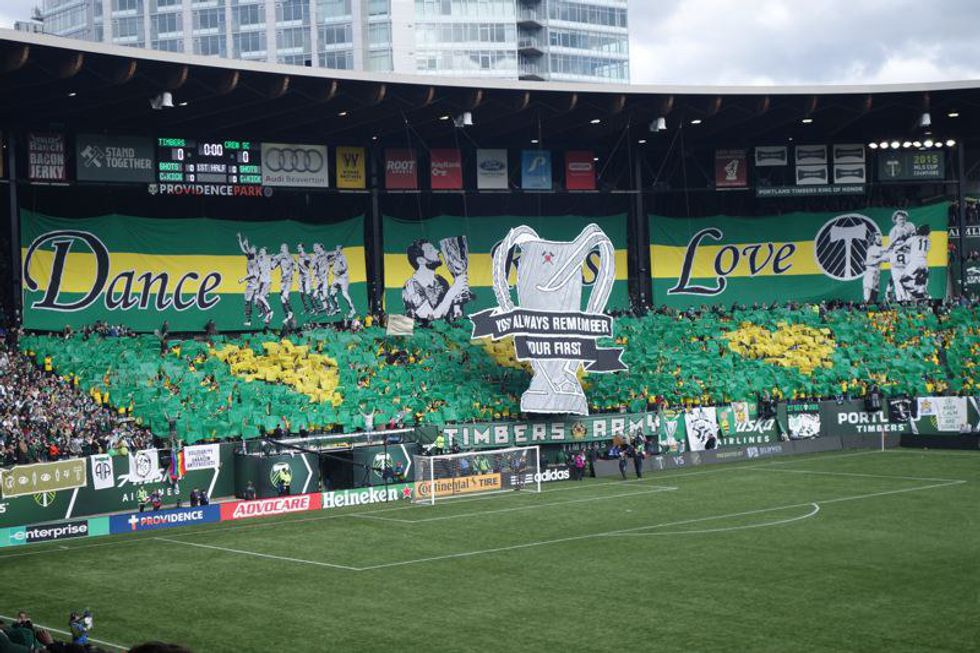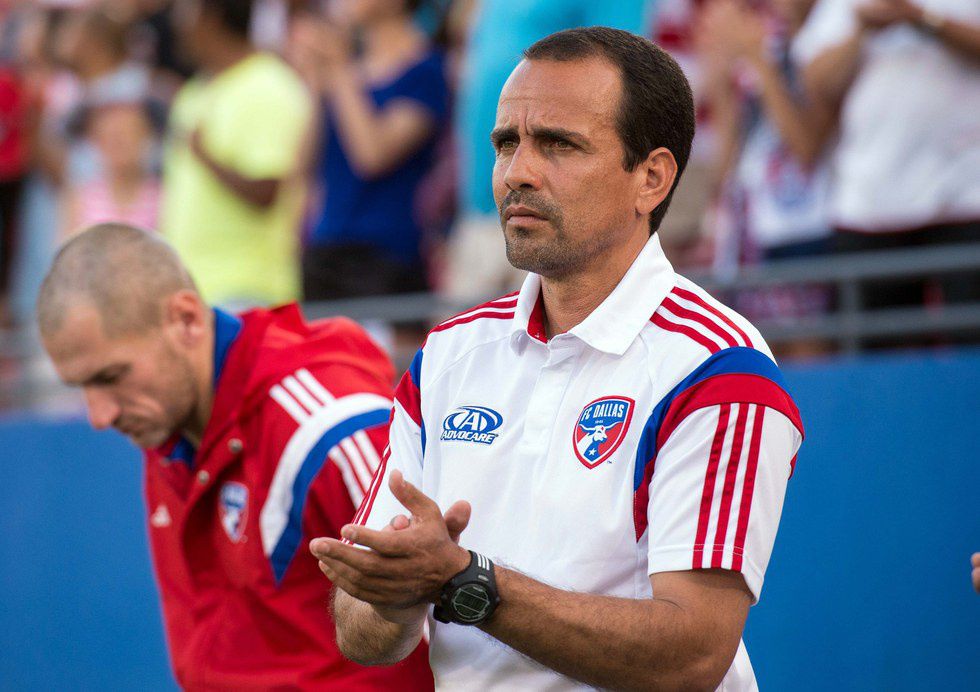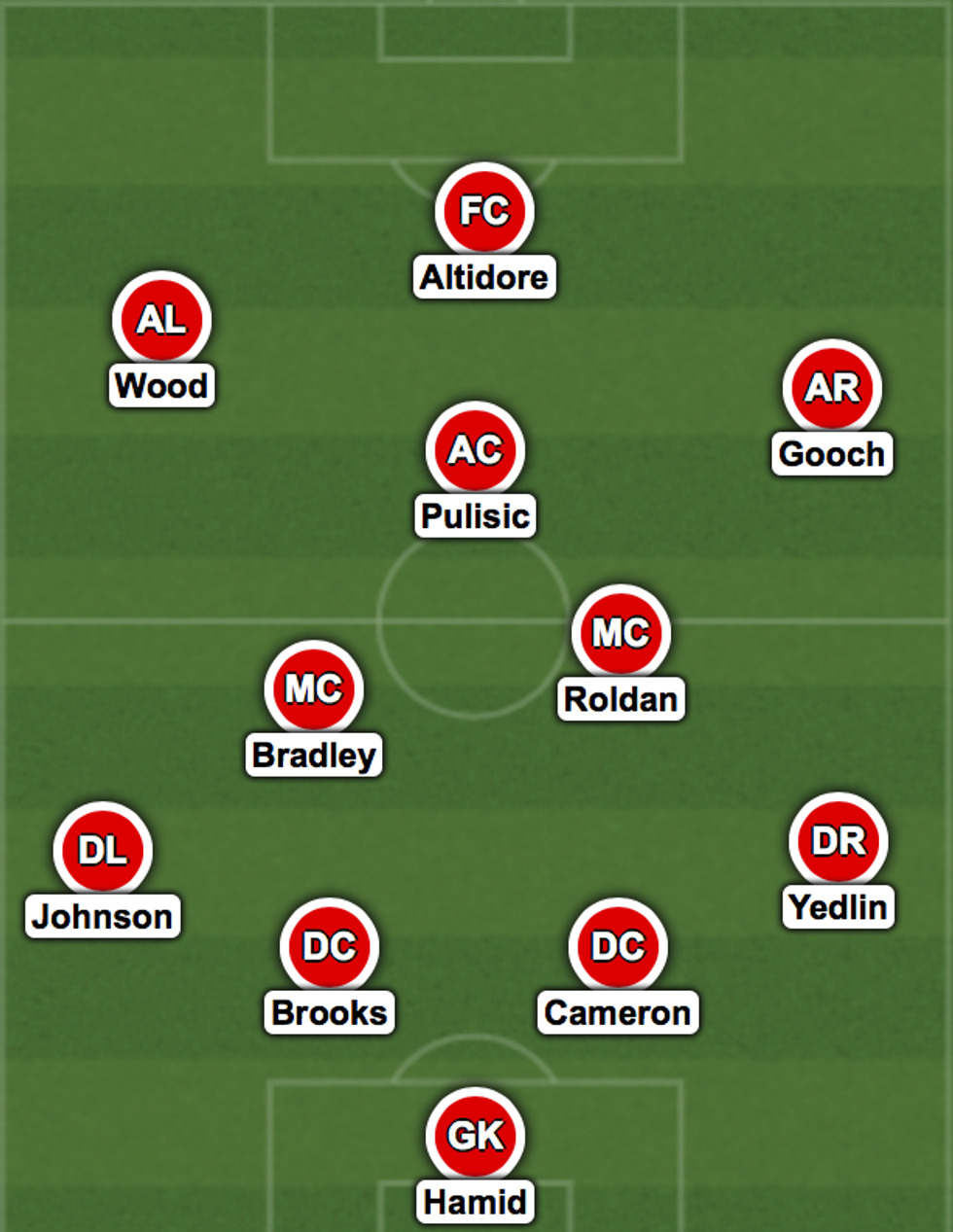In his first interview with the press following his hiring as head coach of the U.S. Men's Soccer Team, Bruce Arena gave this statement:
“We need to build chemistry and have a common goal and really work on a team concept. We have good players and we just need to get them together as a team. It takes a lot of hard work, communication, discipline and some talent — and we have enough of that to end up in Russia in 2018."
To the everyday soccer fan, these sound like very basic, even overly abstract, ideas for a national team program. However, a USMNT supporter is not the everyday soccer fan. Under the reign of previous coach Jurgen Klinsmann, the ideas which Arena is now discussing would have been fresh, cool water in the parched throats of the U.S. Soccer fan. This is not to say that Klinsmann did not employ the same rhetoric as Arena. However Klinsmann's "chemistry" seemed to unveil itself as inconsistent and bad positioning. His "team concept" was sculpted out of yoga and baffling formation changes. His "communication" with players was less than good (see: Michael Bradley, Philip Lahm), and his "discipline" involved empty stomach runs and grueling beep tests.
(Pictured: Klinsmann probably taking Landon Donovan off the 2014 World Cup squad for refusing to participate in yoga sessions (I kid).As a diehard U.S. soccer fan, I can firmly say that Klinsmann's firing came as a huge relief. The list of grievances the fanbase had against Klinsmann seemed to grow larger and larger every few weeks. From underhanded shots at MLS to embarrassing losses at the hands of relative "minnows", the majority of fans had had enough. While I and others fully expected Sunil Gulati (head of U.S. soccer) to wimp out and let Klinsmann continue his traveling circus act, he did a brave and smart thing. Immediately after news of the firing surfaced, then-Galaxy head coach Bruce Arena was rumored to have been offered the job. Within the next few days, these rumors were confirmed, and now here we sit - looking ahead at World Cup qualifying with a new coach at the helm. We can only hope that Arena will implement what he is discussing in his pressers in order to make this team truly successful. Arena's first stint as coach of the national team program from 1998-2006 was moderately successful, but there is no reason why, with his help and the help of the next coach following the 2018 World Cup, this team cannot become one of the best in the world. Here's why:
Depth
The U.S. is slowly becoming a team with depth. There are many players playing consistently in the top ten leagues in the world. In what is arguably the second best league in the world - the German Bundesliga - the U.S. has six (!!!) first team members in the top eight teams of the league. In those same eight teams, there are another three looking to break into the first team. There are another three first-teamers in the English Premier League - the world's best and most historic league (also home to a plethora of U.S. youth internationals). A few more are starting in the oft-underappreciated second division of English soccer - the English Championship. Add on to this the vast number of players starting and starring for teams in MLS, Liga MX, Norway and Scotland, and all of a sudden one can begin to see the depth of the team.
(http://mashable.com/category/usmnt/)
As per request of my brother, I've created a depth chart of each position in the U.S. player pool going forward. Some players have ability in multiple positions and will therefore be listed more than once. These are not in order of Klinsmann's former preferences, but in order of talent (taking into consideration league and player age).
GK: Tim Howard, Bill Hamid, Brad Guzan, Ethan Horvath, Luis Robles, William Yarbrough, David Bingham
LB: Fabian Johnson, Matt Besler, Jonathan Bornstein, Kellyn Acosta, Tim Ream, Robbie Rogers, Brandon Vincent
LCB: John Brooks, Matt Besler, Matt Hedges, Matt Miazga,
RCB: Geoff Cameron, Matt Hedges, Steve Birnbaum, Cameron Carter-Vickers, Matt Miazga, Erik Palmer-Brown
RB: DeAndre Yedlin, Eric Lichaj, Keegan Rosenberry, Geoff Cameron, Timmy Chandler
CDM: Michael Bradley, Danny Williams, Dax McCarty, Kellyn Acosta, Jermaine Jones, Wil Trapp, Perry Kitchen
CM: Darlington Nagbe, Christian Roldan, Alejandro Bedoya, Lynden Gooch, Kelyn Rowe, Gedion Zelalem, Emerson Hyndman, Tommy McNamara
CAM: Sacha Kljestan, Christian Pulisic, Sebastian Lletget, Benny Feilhaber, Darlington Nagbe, Alejandro Bedoya, Lee Nguyen
LW: Christian Pulisic, Fabian Johnson, Sebastian Lletget, Julian Green, Gyasi Zardes, Joe Gyau,
RW: Christian Pulisic, Julian Green, Alejandro Bedoya, Lynden Gooch, Paul Arriola, Gyasi Zardes, Josh Gatt, Joshua Perez,
ST: Jozy Altidore, Bobby Wood, Jordan Morris, Clint Dempsey, Juan Agudelo, Terrence Boyd, Aron Johansson, Gyasi Zardes, Julian Green, Chris Wondolowski
A few comments:
There are a number of players listed here that were exiled during the Klinsmann regime that should get another chance, namely: Benny Feilhaber, Matt Hedges, Danny Williams, Dax McCarty, Bill Hamid, Jonathan Bornstein, Wil Trapp, Eric Lichaj and Juan Agudelo. Also of note is the newcomers that could come in and make an impact immediately: Hedges, Christian Roldan, Sebastian Lletget, Kelyn Rowe, Tommy McNamara.
There are a number of youngsters who should get more chances to prove themselves: Christian Pulisic (who has obviously more than proven himself), Lynden Gooch, Gedion Zelalem, Emerson Hyndman, Julian Green, Josh Perez, Cameron Carter-Vickers, Matt Miazga, Erik Palmer-Brown, and Paul Arriola.
A few players who seemed destined for first team action only to be hindered by injury are Terrence Boyd, Joe Gyau, and Josh Gatt.
I do believe that Christian Pulisic and Fabian Johnson are our best players in a number of positions, and, in order to best utilize their abilities, should be played as a left winger and left back, respectively.
It's time to move Michael Bradley to his home in the CDM role and away from the attacking role he played under Klinsmann.
It's worth noting that the CM position depth chart consists mainly of players who have not been given much of a chance. Klinsmann seemed to enjoy playing Bradley and Jones alongside each other, leaving a hole in the midfield. One of these players can help close gaps and act as the "shuttler" the team needs. This will allow Bradley to focus on being his old "General" self in the CDM position and allow the attacking midfielders more freedom to create.
The striker pool is very deep and can vary depending on who complements each other well. The obvious choice at the moment seems to be some sort of partnership between Altidore and Wood, although with Jordan Morris catching fire and Clint Dempsey's return on the horizon, nothing is set in stone.
Youth
The U.S. is also beginning to have the luxury of talented youth coming through the ranks.
Christian Pulisic is the future right now. His hype train is only picking up steam, but that's because he's the real deal. You don't consistently start for one of the best teams in the world - Borussia Dortmund - as an 18 year old unless you are stupid good. Christian Pulisic is stupid good. It seems crazy, but he should be one of the first names on the team sheet going forward.
Lynden Gooch's rise to the starting eleven at Sunderland has been rapid. Very few people knew of his existence until he rose through the ranks in the Premier League team, becoming the player of the month in Premier League second team competition and then getting promoted to the first team. He was very recently struck with an ankle injury; hopefully his recovery is quick and he can return to Premier League action. His potency in attack and blistering speed make him extremely threatening going forward.
Cameron Carter-Vickers, another 18 year old, has recently broken into the first team at Tottenham. Before that, he had captained T'ham's second team - a team which was home at one point to consistent USMNT starter DeAndre Yedlin. Carter-Vickers is uber-athletic and disciplined, and, although somewhat prone to silly mistakes (probably a matter of age), his talent cannot be denied. Arena should make it a priority to play him in a competitive match in order to tie him to the U.S., because he is a dual national.
Matt Miazga was once ahead of Carter-Vickers in the pecking order, but, after a mediocre spell at Chelsea, his loan move to Vitesse has seen him benched. However, Miazga is still young and extremely talented. One of the best defenders both in the air and in passing, he was arguably the best defender in MLS during the 2015 season. His qualities could make him a perfect partner to Carter-Vickers in the future, although John Brooks will keep one of the two out of the starting lineup over the next little while.
Gedion Zelalem was hyped up for so long, and for good reason. He was one of the best players in Arsenal's youth system, and, after a loan at Rangers in Scotland, is back in England and seeing action in the first team at Arsenal (though not in Premier League play) as a 19 year old. Although his hype has slowed down quite a bit, he is still one of the most composed young midfielders in the U.S. system and is silky smooth on the ball.
Emerson Hyndman has been one of the youth program's bright spots for a long time. At 20, he is a consistent young midfielder and connects the game really well. His vision and passing ability are Michael Bradley-esque. At the moment, he is part of the second team at Bournemouth, a recently promoted Premier League team. Prior to that, he saw a lot of playing time in the Championship with Fulham.
Rubio Rubin has seen his playing time diminish at FC Utrecht, but his spells with the youth national team has shown promise. He is a powerful forward with loads of pace. Hopefully he can get back on track at Utrecht and begin to see some time with the senior national team.
Joshua Perez, an 18 year old attacker and one of few American players to ever play in Italy's Serie A, recently made his first team debut with Fiorentina, a mid-table team.
Other youngsters of note include:
Desevio Payne - Fullback - FC Groningen - Netherlands
Erik Palmer-Brown - CB - FC Porto B - Portugal
Brooks Lennon - ST - Liverpool U23 - England
Haji Wright - RW/LW - Schalke 04 - Germany
Luca de la Torre - CM - Fulham - England
Andrija Novakovich - ST - Reading - England
Justen Glad - CB - Real Salt Lake - MLS
Amando Moreno - ST - Club Tijuana - Mexico
Andrew Carleton - CAM - Atlanta United - MLS
Domestic League Growth
At this point, it's tough to deny the growth of Major League Soccer. More players of high quality are joining the league and, even though it is often money driven, this encourages more players to come. The league is unpredictable. One day you'll watch an incredibly boring game and the next you'll see one of the most captivating soccer games you've ever seen (i.e. Toronto vs. Montreal a few days ago). The league's propensity for the insane keeps the fan involved. Contrary to the opinion of many, MLS is pulling away from it's reputation as a retirement league. It's not easy — the amount of travel takes a toll on the players, and the changes in stadium location can be very difficult to adjust to. It is a challenging league for these reasons, and is becoming more challenging in terms of skill level as time goes on.
What does this have to do with the national team? Well, as the domestic league grows, so does the national team. Klinsmann often feuded with MLS and encouraged his players to go overseas. While this sentiment is understandable, many of his best and most trusted players came from the domestic league. Bruce Arena knows the league well (perhaps better than anyone) and should work well with players and coaches. The league's competition growth should also push the vast number of American-born players in the league toward improvement.
Although the fight for promotion/relegation has been halted because of recent failure on part of NASL (the second division of U.S. Soccer), the league should continue to grow. More Designated Players are coming in and salary caps are increasing. It's a league far from perfect, but is slowly improving, and this should aid the national team program.
Future Coaching Possibilities
Bruce Arena's contract is up after the 2018 World Cup. If, for some reason, his tenure sees impressive growth and showings in tournaments, he could potentially get a contract extension. However, most people would like to see some fresh blood at the coaching position. Luckily there are a number of good options for the team at home and abroad.
Oscar Pareja, the newly minted MLS coach of the year, has proven to be an innovative coach at FC Dallas. His youth systems are absolutely unparalleled in the league, and he understands the landscape of soccer in the United States extremely well, from the top to the bottom. His teams have a solid identity (see: Busca la Forma), and, even without some of the best players this season, still made a very solid run.
The legendary Marcelo Bielsa has been touted as a possible coach of the national team program. However, he has reportedly asked for $4 million a year, Landon Donovan as an assistant (an interesting and appealing request), and a change in the MLS season format. Bielsa would bring high pressing, attacking style to the team.
Other possible coaches are Jesse Marsch of the New York Red Bulls, Caleb Porter of the Timbers, and Peter Vermes of Sporting Kansas City.
In total, the U.S. soccer program has the potential to have a very bright future. That is, of course, if the stars align. Prospects have to pan out and push themselves, MLS has to continue to grow, and good coaching decisions must be made.
And, of course, just for fun, here's my ideal starting lineup right now and my prediction for the starting lineup in the 2018 World Cup.
Present
2018 WC
As with all predictions from about two years out, I'm sure this will be extremely wrong. Injuries could happen, older players could phase out, and new players could come out of nowhere.
One thing is for sure:
U.S. Soccer is not dead.


























